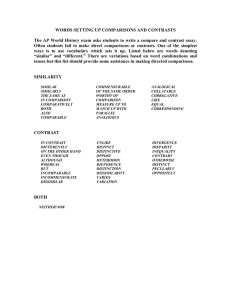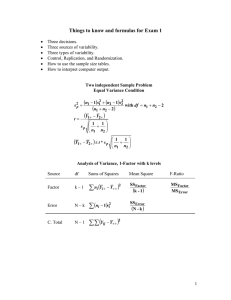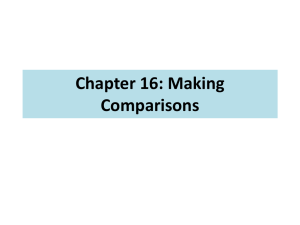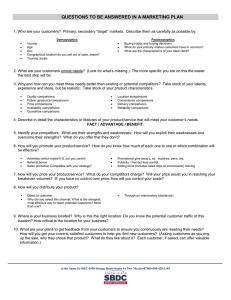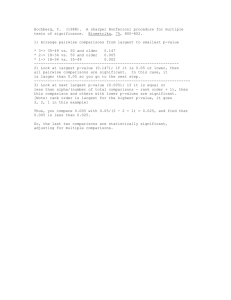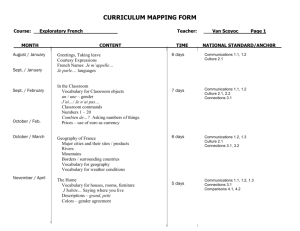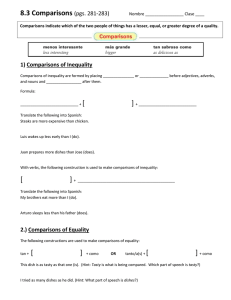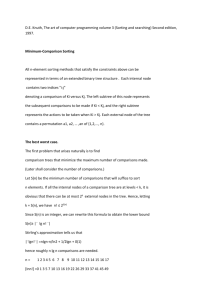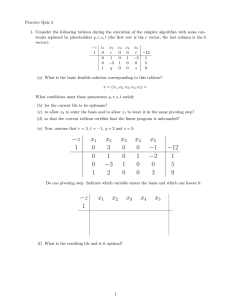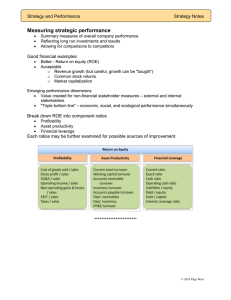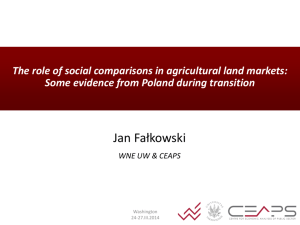writing frames-comps-Word
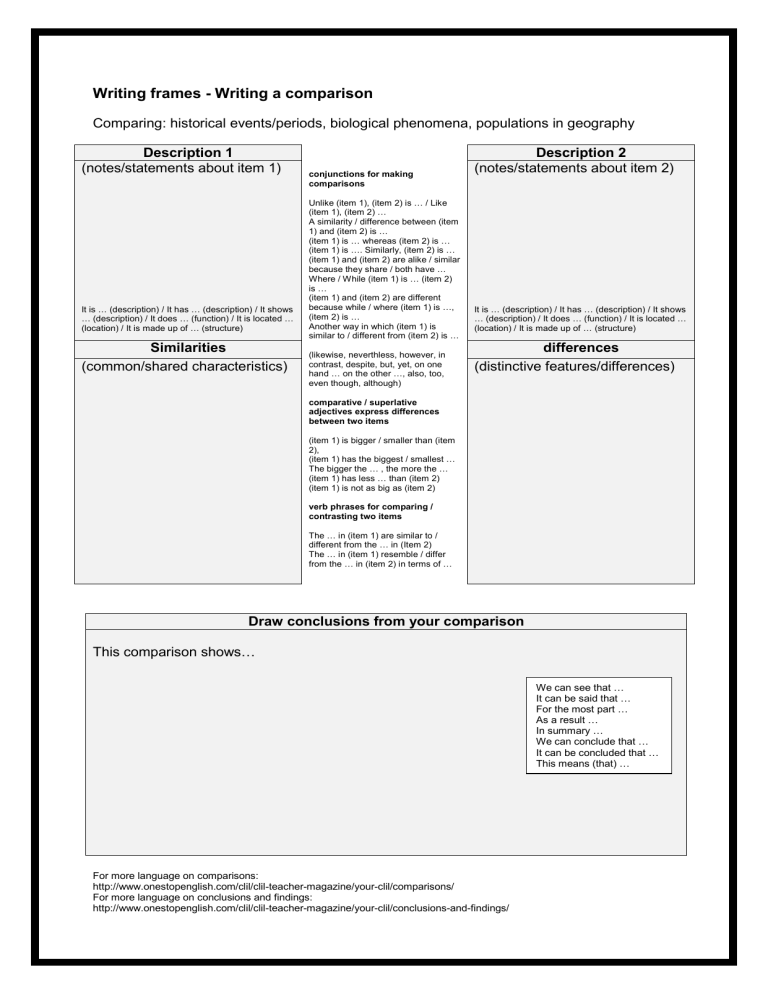
Writing frames - Writing a comparison
Comparing: historical events/periods, biological phenomena, populations in geography
Description 1
(notes/statements about item 1)
It is … (description) / It has … (description) / It shows
… (description) / It does … (function) / It is located …
(location) / It is made up of … (structure)
Similarities
(common/shared characteristics) conjunctions for making comparisons
Unlike (item 1), (item 2) is … / Like
(item 1), (item 2) …
A similarity / difference between (item
1) and (item 2) is …
(item 1) is … whereas (item 2) is …
(item 1) is …. Similarly, (item 2) is …
(item 1) and (item 2) are alike / similar because they share / both have …
Where / While (item 1) is … (item 2) is …
(item 1) and (item 2) are different because while / where (item 1) is …,
(item 2) is …
Another way in which (item 1) is similar to / different from (item 2) is …
(likewise, neverthless, however, in contrast, despite, but, yet, on one hand … on the other …, also, too, even though, although) comparative / superlative adjectives express differences between two items
(item 1) is bigger / smaller than (item
2),
(item 1) has the biggest / smallest …
The bigger the … , the more the …
(item 1) has less … than (item 2)
(item 1) is not as big as (item 2) verb phrases for comparing / contrasting two items
The … in (item 1) are similar to / different from the … in (Item 2)
The … in (item 1) resemble / differ from the … in (item 2) in terms of …
Description 2
(notes/statements about item 2)
It is … (description) / It has … (description) / It shows
… (description) / It does … (function) / It is located …
(location) / It is made up of … (structure) differences
(distinctive features/differences)
Draw conclusions from your comparison
This comparison shows…
We can see that …
It can be said that …
For the most part …
As a result …
In summary …
We can conclude that …
It can be concluded that …
This means (that) …
For more language on comparisons: http://www.onestopenglish.com/clil/clil-teacher-magazine/your-clil/comparisons/
For more language on conclusions and findings: http://www.onestopenglish.com/clil/clil-teacher-magazine/your-clil/conclusions-and-findings/
Writing frames - Writing a comparison
Visuals for comparisons can also be used to help support writing
Venn Diagram list characteristics of item 1 list characteristics of item 2 list shared characteristics put language support in separate sections
Table give items in columns give characteristics in rows put language support on borders
Illustrations give characteristics as labels put language support between two images
